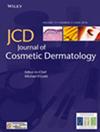An Exploratory Study of PN HPT for Treating Postsurgical Atrophic and Depressed Scars
Abstract
Background
Postsurgical atrophic scars tend to respond poorly to treatments, especially non-energy-based ones. Hydrophilic PN HPT (Polynucleotides High Purification Technology) injected intradermally is a non-energy-based option with an immediate volume-enhancing effect that indirectly improves the fibroblast synthesis of collagen and extracellular matrix. The PN HPT ingredient has the further benefit of a dermal “priming” effect that enhances the efficacy of other scar treatments.
Objectives
Verify retrospectively, with advanced techniques, the efficacy of PN HPT monotherapy as postsurgical scar treatment.
Methods
Retrospective data collection in 18- to 65-year-old women with moderate-to-severe atrophic scars after mammary surgery undergoing a five-session intradermal treatment course with 0.75% PN HPT gel formulation in single-use syringes starting 6 months after surgery. Primary retrospective efficacy parameter: changes in scar morphology and symptom severity after three and 6 months (modified Vancouver Scar Scale, mVSS). Secondary efficacy parameters: roughness score 6 months after baseline (Antera 3D CS tridimensional skin analysis system) and Global Aesthetic Improvement Scale (GAIS, Investigator and Patient subscales) after three and 6 months.
Results
Total mean mVSS highly significantly improved from 11.2 ± 1.92 at baseline to 7.0 ± 1.68 and 6.9 ± 1.55 after three and 6 months, respectively; the mean Antera 3D CS roughness score improved from 13.5 ± 4.14 to 10.0 ± 3.49 after 6 months. After three and 6 months, the GAIS subscores for investigators and cohort subjects were identical (3.0 ± 0.81 and 3.0 ± 0.72, respectively). The photographic documentation supported the previous results.
Conclusions
In monotherapy, the intradermal PN HPT ingredient seems to quickly and safely relieve the burden of postsurgical atrophic scars. However, the lack of a formal parallel control group is a severe limitation. The objective quantitative measurements confirmed the long-lasting benefits.


 求助内容:
求助内容: 应助结果提醒方式:
应助结果提醒方式:


